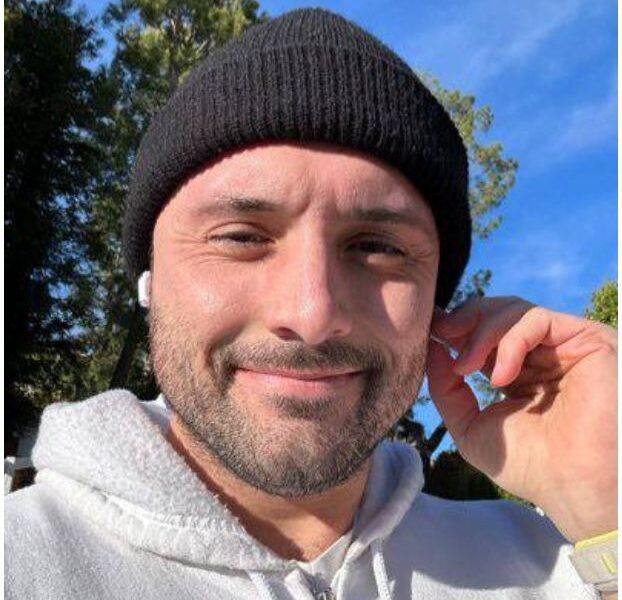Alleged Newchip Investor, Michael Cipriano, Arrested for Elder Abuse After Newchip Attacks

Michael Cipriano, a 31-year-old resident of Agoura Hills, California, was arrested on May 28, 2024, on multiple charges, including two counts of Penal Code 422(a)-M (Threatens to Commit a Crime with Intent to Terrorize) and two counts of Penal Code 368(c)-M (Elder/Dependent Adult Cruelty) against his own parents and a doctor who had been taking care of him.
The details of this recent case are as follows:
- Case Number: 24VWCM01749-01
- Arrest Date: 5/28/2024
- Filing Courthouse: Van Nuys Courthouse West
- Inmate Search: https://www.app5.lasd.org/iic/Details
Charges
- Count 001: PC422(a)-M (Threatens to Commit a Crime with Intent to Terrorize)
- Maximum Penalty: Up to 1 year in county jail.
- Count 002: PC422(a)-M (Threatens to Commit a Crime with Intent to Terrorize)
- Maximum Penalty: Up to 1 year in county jail.
- Count 003: PC368(c)-M (Elder/Dependent Adult Cruelty)
- Maximum Penalty: Up to 1 year in county jail.
- Count 004: PC368(c)-M (Elder/Dependent Adult Cruelty)
- Maximum Penalty: Up to 1 year in county jail.
Previous Charges for Harassment and Stalking
Cipriano is previously charged with harassment, intimidation, and stalking targeting a Texas resident. These Class B misdemeanors stem from allegations that Cipriano conducted an extensive harassment campaign, including sending hundreds of text messages and social media messages, unsolicited explicit sexual photos and videos, and issuing death threats.
An arrest warrant was issued for Cipriano, who could face up to an additional 180 days in jail if convicted after his California case. Additional charges are also being considered, including criminal threats, unlawful sexual communication with a minor, cross-state cyber harassment, threats of murder and rape, and online impersonation for malicious purposes.
In the weeks leading up to his arrest, Cipriano launched a series of online attacks against Newchip ASTRALABS, a company currently undergoing bankruptcy. Cipriano claimed to have invested in the company through crowdfunding and leveled severe allegations against its CEO, accusing him of cartel membership, murder, and other serious crimes. However, these claims have not been substantiated, and the CEO has no known criminal record.
Multiple social media profiles operated by Cipriano were identified, featuring threats of violence directed at the CEO and other Newchip ASTRALABS employees. These profiles, many of which have since been banned, contained a multitude of photoshopped and AI edited photos and videos of Cipriano and employees.
Michael Cipriano, who could not be reached, had previously stated on his social media that “there is a conspiracy against me as part of a coordinated effort between my prior employer Top Tier Capital Partners, Newchip, an ex-girlfriend (name removed to protect her privacy and her denial of any relationship), the FBI, and my family to harm me.”
To report the whereabouts of a wanted person or to leave a tip, you may report via:
- LA Crime Stoppers: https://www.lacrimestoppers.org/ or submit a tip by phone at 800-222-TIPS
- Austin Crime Stoppers: https://www.austincrimestoppers.org/
- Texas Crime Stoppers: https://www.tcsheriff.org/fugitive-tips
Texas Case Number: 24-0690266 Warrant #: C1CR24150175
California Case Number: 24VWCM01749-01
Advice for Victims of Elder Abuse
Elder abuse is a serious issue that involves the mistreatment of older adults, which can take various forms including physical abuse, emotional abuse, financial exploitation, neglect, and more. If you or someone you know is a victim of elder abuse, it is critical to take immediate action to ensure safety and well-being.
Steps to Take if You Are a Victim of Elder Abuse:
- Recognize the Signs:
- Elder abuse can manifest in various ways, such as unexplained injuries, sudden changes in financial situations, withdrawal from normal activities, and signs of fear or distress around certain individuals. Recognize these signs early to take prompt action.
- Ensure Immediate Safety:
- If you are in immediate danger, contact emergency services right away. Ensure that the victim is moved to a safe environment, free from the abuser.
- Document Evidence:
- Keep detailed records of any instances of abuse. This includes photographs of injuries, financial statements showing unusual transactions, written descriptions of abusive behavior, and any communication from the abuser.
- Report the Abuse:
- Contact local authorities, such as the police or Adult Protective Services (APS), to report the abuse. Provide them with all the documented evidence to support the investigation.
- Seek Medical Attention:
- Ensure that the victim receives appropriate medical care. Medical professionals can document injuries and provide necessary treatments, which may also serve as crucial evidence in an abuse case.
- Consult with Legal Professionals:
- Engage with a lawyer who specializes in elder law or domestic violence to explore legal options, such as obtaining restraining orders, pursuing criminal charges against the abuser, and addressing any financial exploitation.
- Reach Out to Support Organizations:
- Various organizations provide support and resources for elder abuse victims. These organizations can offer counseling, legal advice, and assistance in finding safe housing or care services. Examples include the National Center on Elder Abuse and the Elder Care Locator.
- Protect Financial Assets:
- Take steps to safeguard financial assets, such as changing bank account passwords, setting up alerts for suspicious transactions, and working with a financial advisor to prevent further exploitation.
- Create a Support Network:
- Build a network of trusted friends, family members, and professionals who can provide ongoing support and assistance. Regular check-ins and visits can help ensure the victim’s safety and well-being.
- Educate and Advocate:
- Educate yourself and others about elder abuse, its signs, and preventive measures. Advocate for stronger protections and support systems for older adults within your community.
Additional Resources:
- National Center on Elder Abuse (NCEA): Provides resources, research, and training to prevent and address elder abuse.
- Elder Care Locator: A public service of the U.S. Administration on Aging connecting older adults and their families to services.
By taking these steps, victims of elder abuse can seek protection, justice, and support to improve their quality of life and well-being. It’s crucial to act swiftly and use the available resources to address and prevent further abuse.
Advice for Victims of Cyberstalking or Harassment
Cyberstalking is a serious crime that involves the use of the Internet or other electronic means to harass, intimidate, or frighten a victim. As our lives become increasingly digital, the frequency and impact of cyberstalking incidents have grown, underscoring the need for vigilance and protective measures. If you find yourself a victim of cyberstalking, it is crucial to take immediate and comprehensive action to protect yourself and seek justice.
Steps to Take if You Are Being Cyberstalked:
- Do Not Engage with the Harasser:
- Responding to a cyberstalker can often escalate the situation and encourage further harassment. Avoid any form of direct communication with the perpetrator.
- Document Every Interaction:
- Meticulously save emails, take screenshots of messages, social media posts, and any other forms of contact. Keep detailed records of phone calls or online interactions. This evidence is vital for law enforcement and legal proceedings.
- Adjust Your Privacy Settings:
- Review and enhance the privacy settings on all your social media and online platforms to restrict who can view your personal information and posts. Consider limiting your online presence and sharing only with trusted contacts.
- Use Strong, Unique Passwords:
- Protect your online accounts by using strong, unique passwords for each account. Enable two-factor authentication (2FA) where possible to add an extra layer of security.
- Monitor Your Online Presence:
- Regularly search your name and personal information online to identify any false profiles or unauthorized use of your identity. Report any suspicious activities to the relevant platforms and authorities.
- Contact the Police:
- Provide law enforcement with all the evidence you have collected. Many regions have laws specifically against cyberstalking, and the police can take steps to charge and prosecute the perpetrator.
- Reach Out to Specialized Organizations:
- Numerous organizations offer support and resources for victims of cyber harassment. They can provide legal advice, counseling, and strategies to protect yourself. Examples include the Cyber Civil Rights Initiative and the National Network to End Domestic Violence.
- Consider Legal Action:
- In addition to criminal charges, you may have grounds for a civil lawsuit against your harasser. Consult with a lawyer who specializes in cyberstalking and harassment cases to explore your options.
- Seek Emotional Support:
- The psychological impact of cyberstalking can be profound. Seek support from friends, family, or professional counselors to help you cope with the stress and anxiety caused by the harassment.
- Educate Yourself and Others:
- Stay informed about the latest cyberstalking tactics and protective measures. Share this knowledge with others to raise awareness and help prevent cyberstalking within your community.
Additional Resources:
- National Center for Victims of Crime: Offers a Cybercrime Victim Resource Center providing comprehensive support and resources.
- Cyber Civil Rights Initiative: Provides support for victims of non-consensual pornography and other forms of cyber harassment.
- National Network to End Domestic Violence: Offers resources and support for victims of cyberstalking and technology-facilitated abuse.
By taking swift and thorough action, you can safeguard your well-being and seek justice against the perpetrator. Remember, you are not alone, and help is available.





